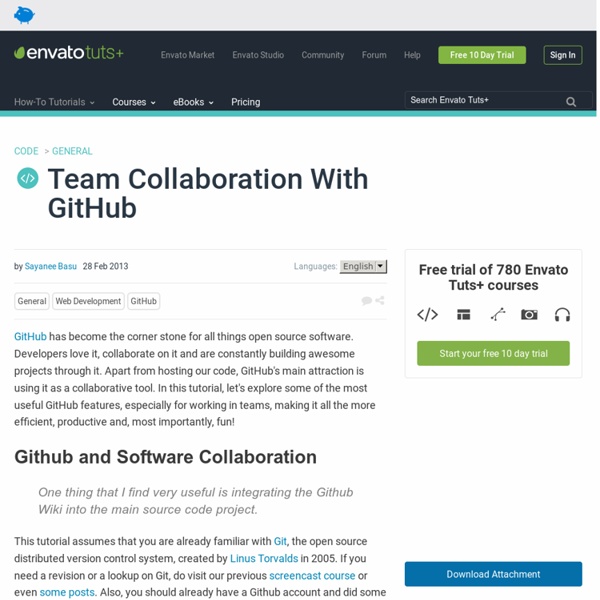Team Collaboration With GitHub

GNU Assembler the beginning
bissel älter das ganze gerade aufm backup wieder gefunden vllt. bringts dem ein oder anderem was So willkommen zu meinem ersten kleinen Assembler tutorial. Zuerst einmal ein paar kurze Informationen über den GNU Assembler und über die Funktionsweiße des Assemblers und der Register. Was ihr hier lernen werdet sind absolute grundlagen in Assembler also den aufbau eines Programmes Sprungadressen den umgang mit variablen die benutzung von macros und abfragen. Was ist der GNU Assembler?(entnommen aus Wiki) Code: The GNU Assembler, commonly known as Gas, is the assembler used by the GNU Project. So los geht’s jungx! Reigster: Register sind das wichtigste in Assembler. Was sind denn Überhaupt reigster? Besondere Register eax – extended accumulator register ebx – extended base register ecx – extended counter register edx – extended data register ebp – extended base pointer esp – extended stack pointer Die ersten 4 allgeminen Register(eax,ebx,ecx,edx) sind in weitere kleinere Register unterteilt.
MikeOS - simple x86 assembly language operating system
x86 operating system MikeOS is an operating system for x86 PCs, written in assembly language. It is a learning tool to show how simple 16-bit, real-mode OSes work, with well-commented code and extensive documentation. Features: A text-mode dialog and menu-driven interface Boots from a floppy disk, CD-ROM or USB key Over 60 system calls for use by third-party programs File manager, text editor, image viewer, games... The code is completely open source (under a BSD-like license), and is written by Mike Saunders and other developers. News 28 Oct 2013: MikeOS mouse library released -- Joshua Beck has implemented his TachyonOS mouse code as a MikeOS library. Downloads The link below contains the source code (see the source and programs directories), along with disk images for floppies/USB keys and CD-Rs in the disk_images folder. You can write the images to a floppy disk, USB key or CD-R and boot your PC from them to test -- or use a PC emulator such as QEMU, VirtualBox or VMware. Images Handbooks
Related:
Related:



